Kia Sonet [2020-2022] GTX Plus 1.5 AT [2020-2021]
|Rate & Win
- Sonet [2020-2022]
- Specs & Features
- Variants
- Colours
- User Reviews
discontinued
Variant
GTX Plus 1.5 AT [2020-2021]
City
Show price in my city
Rs. 13.10 Lakh
Last Recorded PriceKia Sonet [2020-2022] GTX Plus 1.5 AT [2020-2021] Review
What we are driving here is the top-spec GT Line in the GTX Plus guise with a diesel-auto.
What is it?
How is it on the inside?
How does it drive?
Should I buy one?
Where does it fit in?
Specifications & Features
- Specifications
- Features
- Specifications
- Features
Specifications
Engine & Transmission
Engine1493 cc, 4 Cylinders Inline, 4 Valves/Cylinder, DOHCEngine Type1.5L CRDi VGTFuel TypeDieselMax Power (bhp@rpm)113 bhp @ 4000 rpmMax Torque (Nm@rpm)250 Nm @ 1500 rpmMileage (ARAI)19 kmplDriving Range855 kmDrivetrainFWDTransmissionAutomatic (TC) - 6 Gears, Manual Override, Sport ModeEmission StandardBS 6Turbocharger / SuperchargerTurbochargedValve/Cylinder (Configuration)4, DOHCDimensions & Weight
Length3995 mmWidth1790 mmHeight1647 mmWheelbase2500 mmCapacity
Suspensions, Brakes, Steering & Tyres
Features
Exterior
Braking & Traction
Safety
Comfort & Convenience
Lighting
Locks & Security
Doors, Windows, Mirrors & Wipers
Entertainment, Information & Communication
Mobile App Features
Storage
Airbags
Seats & Upholstery
Instrumentation
Manufacturer Warranty
Other Sonet [2020-2022] Variants
| Variants | Price | Specifications | |
|---|---|---|---|
Rs. 13.10 Lakh | 5 Person, FWD, 250 Nm, 392 litres, 6 Gears, 1.5L CRDi VGT, Electrically Adjustable, 45 litres, 855 km, No, Front & Rear, 19 kmpl, 3995 mm, 1790 mm, 1647 mm, 2500 mm, 250 Nm @ 1500 rpm, 113 bhp @ 4000 rpm, Keyless, Yes (Automatic Climate Control), Front & Rear, 1, Reverse Camera with Guidance, Yes, Yes, Yes, Yes, No, 6 Airbags (Driver, Front Passenger, 2 Curtain, Driver Side, Front Passenger Side), Yes, 0, BS 6, 5 Doors, 19 kmpl, Diesel, Automatic (TC), 113 bhp | Get Offers from Dealers |
Similar Cars
Explore Used Kia Sonet
Colors
Aurora Black Pearl
Gravity Grey
Steel Silver
Intense Red
Glacier White Pearl
View More Colours
Write a detailed review and you can win Amazon voucher worth Rs. 2,000
Reviews
- (25 Ratings) 15 Reviews
3.8/5
- Sonet Gtx+ Diesel AT the car you won't feel like sellingBuying experience was okay because it's a new dealership in our city and with low experienced employees but everything gets neglected when you start driving it . Every mode serves it's purpose . If you like to cruise on low speed with comfort then eco mode is best and if you want the full performance from it just switch it to sports and it's eager to run like a cheeta. I've touched the top speed of 177 km/h with ease and confidence. You won't even feel the gear changes in eco and normal mode but in sports you do and I think you should that gives another kick while driving. Just the road should be smooth and no bumps because the suspension is on stiffer side which helps in better handling. Mileage is 11-13 km/l in city and 17-18 on highway. While buying I felt the ventilated seats is not that useful feature but now I use it all the time and the interior is plush compared to any rival feels like you're in a luxury suv and cherry on top is the bose sound system which will be delightful for any normal consumer but if you're an audiophile then I suggest for some upgrades according to your taste . For me the factory setup is doing great though. In all best car for a family of 4. Serves you with everything you'll even need as well as want.Rating parameters(out of 5)5
Exterior
4Comfort
5Performance
3Fuel Economy
4Value For Money
About the ReviewerPurchase NewDriven forIts my mate since agesWas this review helpful?60 - nice carservicing and maintenance nice car with amazing family safety . and money saving with other company car so buy kia sonet and enjoy every drive experiance with great full joy . good carRating parameters(out of 5)5
Exterior
5Comfort
5Performance
5Fuel Economy
5Value For Money
About the ReviewerPurchase Not PurchasedDriven forDid a short drive onceWas this review helpful?12 - ComboGuys if you want to buy a car then buy it because this is combo of car and home because if you are traveling some where you love to sleep on it because seat is so comfortable and so good don't waste money on hotel.Rating parameters(out of 5)5
Exterior
5Comfort
5Performance
5Fuel Economy
5Value For Money
About the ReviewerPurchase NewDriven forFew thousand kilometersWas this review helpful?11
- Home
- Kia Cars
- Sonet [2020-2022]
- GTX Plus 1.5 AT [2020-2021]

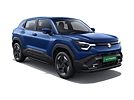


![Kia Sonet [2020-2022] GTX Plus 1.5 AT [2020-2021] Kia Sonet [2020-2022] GTX Plus 1.5 AT [2020-2021]](https://imgd.aeplcdn.com/664x374/n/cw/ec/41523/sonet-exterior-right-front-three-quarter-110.jpeg?q=80)
![Kia Sonet [2020-2022] Right Front Three Quarter Kia Sonet [2020-2022] Right Front Three Quarter](https://imgd.aeplcdn.com/664x374/n/cw/ec/41523/sonet-exterior-right-front-three-quarter-107.jpeg?q=80)
![Kia Sonet [2020-2022] Right Side View Kia Sonet [2020-2022] Right Side View](https://imgd.aeplcdn.com/664x374/n/cw/ec/41523/sonet-exterior-right-side-view-2.jpeg?q=80)
![Kia Sonet [2020-2022] Right Rear Three Quarter Kia Sonet [2020-2022] Right Rear Three Quarter](https://imgd.aeplcdn.com/664x374/n/cw/ec/41523/sonet-exterior-right-rear-three-quarter-2.jpeg?q=80)

![Kia Sonet [2020-2022] Rear View Kia Sonet [2020-2022] Rear View](https://imgd.aeplcdn.com/664x374/n/cw/ec/41523/sonet-exterior-rear-view.jpeg?q=80)
![Kia Sonet [2020-2022] Left Rear Three Quarter Kia Sonet [2020-2022] Left Rear Three Quarter](https://imgd.aeplcdn.com/664x374/n/cw/ec/41523/sonet-exterior-left-rear-three-quarter.jpeg?q=80)
![Kia Sonet [2020-2022] Left Side View Kia Sonet [2020-2022] Left Side View](https://imgd.aeplcdn.com/664x374/n/cw/ec/41523/sonet-exterior-left-side-view.jpeg?q=80)



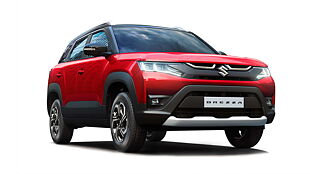

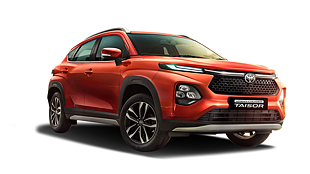


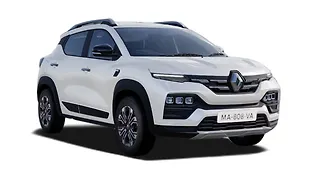
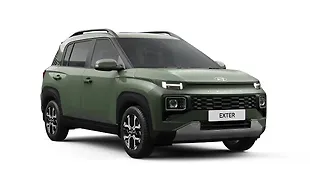
![Second hand Kia Sonet HTX 1.0 iMT [2020-2021] Second hand Kia Sonet HTX 1.0 iMT [2020-2021]](https://imgd.aeplcdn.com/310x174/vimages/202501/3781746_35000_1_1736239766719.jpg?q=80)
![Second hand Kia Sonet GTX Plus 1.0 iMT [2020-2021] Second hand Kia Sonet GTX Plus 1.0 iMT [2020-2021]](https://imgd.aeplcdn.com/310x174/vimages/202412/3755123_142094_1_1734593397037.jpg?q=80)

![Second hand Kia Sonet GTX Plus 1.5 AT [2020-2021] Second hand Kia Sonet GTX Plus 1.5 AT [2020-2021]](https://imgd.aeplcdn.com/310x174/vimages/202412/3765137_128283_1_1735276994768.jpg?q=80)

![Second hand Kia Sonet HTK Plus 1.2 [2020-2021] Second hand Kia Sonet HTK Plus 1.2 [2020-2021]](https://imgd.aeplcdn.com/310x174/vimages/202501/3801233_6145_1_1737446288731.jpg?q=80)
![Second hand Kia Sonet HTX 1.5 [2020-2021] Second hand Kia Sonet HTX 1.5 [2020-2021]](https://imgd.aeplcdn.com/310x174/cw/ucp/stockApiImg/CBOXCOS_p4i03fgh_1_49962835.jpg?q=80)
![Second hand Kia Sonet GTX Plus 1.0 iMT [2020-2021] Second hand Kia Sonet GTX Plus 1.0 iMT [2020-2021]](https://imgd.aeplcdn.com/310x174/cw/ucp/stockApiImg/KR88BMO_te48y67j_1_49027350.jpg?q=80)
![Second hand Kia Sonet GTX Plus 1.0 DCT [2020-2021] Second hand Kia Sonet GTX Plus 1.0 DCT [2020-2021]](https://imgd.aeplcdn.com/310x174/vimages/202501/3799256_71832_1737266535512.jpeg?q=80)